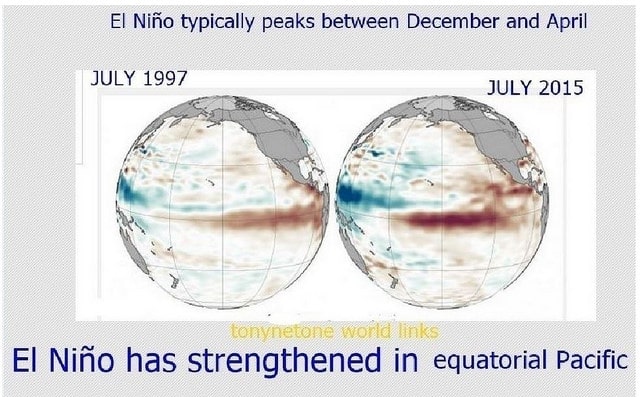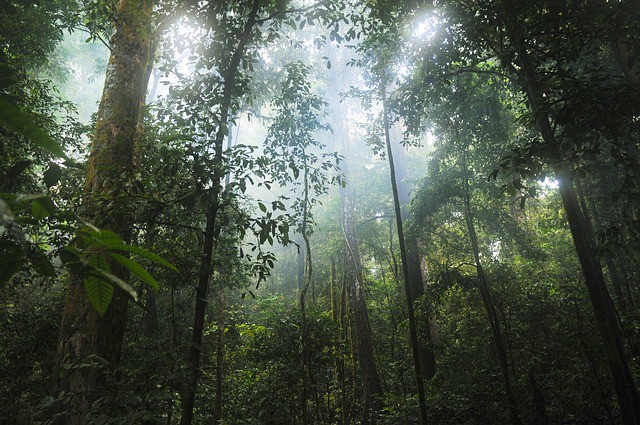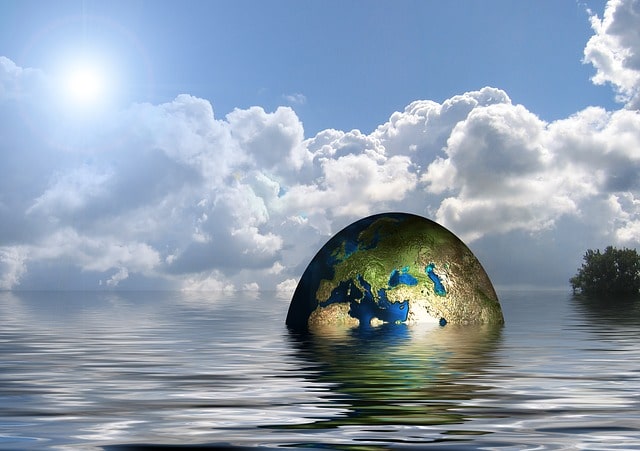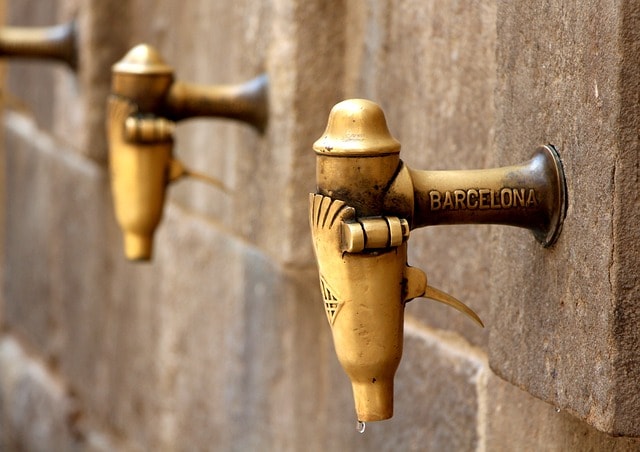Effects of Greenhouse Gases on Climate Change
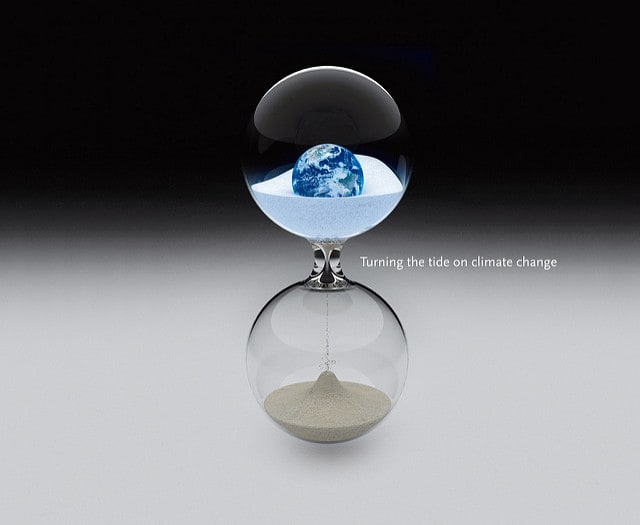
The reason our Earth is habitable is because it is like a greenhouse. Sunlight penetrates through the atmosphere, warming the Earth’s surface, then radiating back to space (infrared radiation). A portion of this outgoing heat is retained in the Earth’s atmosphere and radiated all around by greenhouse gases. This process is called the greenhouse effect. In terms of global climate change, greenhouse gases play an active role in altering the Earth’s climate.
In the normal scheme of things, the greenhouse effect is a good thing. It creates conditions which are optimal for life as greenhouse gases trap just enough of the sun’s heat on the Earth’s surface to maintain the temperature required for the survival of human life. But now there is too much greenhouse gas and it’s trapping too much heat, which is wreaking havoc on Earth in the form of global warming.
Greenhouse gases have many direct and indirect effects on climate change. It is agreed, however, that all the greenhouse gases trap heat and raise the global temperature. This, in turn, affects the cycle of water which cycles from frozen to liquid and then gaseous and back. This, in turn, affects every aspect of the climate cycle. More heat means more water vapor in the air, which means more rain and snow. Meanwhile, more heat means sea ice is melting faster, turning into water, which in turn is evaporated into vapor in a self-propagating cycle.
Any effect of greenhouse gas can be measured on 3 scale:
- How much of that gas is available in the atmosphere.
- How long does that gas stay in the atmosphere.
- How powerful is it? Some greenhouse gases trap more heat than others.
Major Greenhouse Gases
The main greenhouse gas culprits are water vapor, carbon dioxide, nitrous oxide, methane, and fluorinated gases. Tropospheric ozone also contributes to the greenhouse effect. Each gas has different effects on climate change, which is measured by the GWP (Global Warming Potential). The GWP uses carbon dioxide as the standard to measure against since it is the most long-lasting of the gases. A gases’ rating depends on how much of it there is in the atmosphere, how long it will linger and how powerful it is.
- Water Vapor (H20)
Water vapor doesn’t actually have any effect on temperature so it is not rated with a GWP. As planet gets hotter, more water gets evaporated in the atmosphere. As water vapor is a greenhouse gas, this means more water vapor in the atmosphere leads to more warming. Unlike other greenhouse gases that remains in the atmosphere for years, water vapor stays in the atmosphere for few days before falling back to the Earth in the form of rain or snow. What it does do is amplify whatever heat happens to be there in a positive feedback loop.
Greenhouse gases increases -> Temperature rises -> Water vapor increases -> Water vapor amplifies effects of other gases -> Again temperature rises
Water vapor is basically water that is evaporated up from oceans, lakes, streams and even soil. Increase in this evaporation means drier environments. The extra water vapor in the air means more rain and snow and heavier storms.
- Carbon Dioxide (CO2)
Water vapor and carbon dioxide are co-conspirators in aggravating climate change. CO2 (carbon dioxide) alters the balance of heat radiation in the atmosphere, which in turn alters the level of water vapor. Carbon dioxide is released through respiration, burning of fossil fuels, deforestation, and volcanic eruptions.
Although in itself not the most potent of the greenhouse gases, it is the gas that IPCC has rated as having the highest radiative force (most warming) because its levels are the highest, therefore it’s effects are the most damaging. Carbon dioxide is also the standard against which other gases are rated in the GWP comparisons over a 100-year scale. Additionally, it lasts the longest in the atmosphere – staying in the atmosphere for up to 50,000 years. Therefore, it is a long-life greenhouse gas.
- Nitrous Oxide (N20)
Nitrous oxide is naturally produced when bacteria process extra nitrogen molecules found in the soil or ocean waters with oxygen molecules. N20 is a powerful greenhouse gas that is produced by the use of commercial and organic fertilizers in agricultural practices, fossil fuels burning, biomass burning and nitric acid production. It actually warms the atmosphere 300 times more than carbon dioxide, primarily by trapping heat in the atmosphere, but it is second in the radiative force scale as it is not as abundant. It has an average GWP 281 times that of CO2 because its damage is chronic as it lingers in the atmosphere for around 114 years. It is also a long-life greenhouse gas.
Nitrous oxide also reacts with oxygen to form nitric oxide, which creates tropospheric ozone (ground level ozone). And, when it is released into the air, nitrous oxide combines with compounds, water, oxygen and other chemicals to create acid rain.
- Methane (CH4)
Methane is yet another greenhouse gas that is produced through natural sources and human activities. Natural sources of methane include wetlands, termites and oceans. Man-made activities include agriculture, decomposition of wastes in landfills, and manure management associated with domestic livestock. It is rated third in the GWP scale with a GWP of less than 50 over 100 years as it lasts only around a decade. The problem with methane is that while it is much less abundant, it absorbs a lot more energy than CO2 and it sets the stage for tropospheric ozone, another greenhouse gas.
Another problem with methane is that it can be frozen. A large quantity of it has been found trapped in ice in the Arctic. As the Arctic ice melts, this methane is being released and a vicious cycle is playing out with this greenhouse gas being released from the ice, then being frozen again, only to be released again.
- Fluorinated Gases (including Chlorofluorocarbons (CFCs))
The four main categories of fluorinated gases are Hydrofluorocarbons, Perfluorocarbons, Sulfur Hexafluoride and Nitrogen Trifluoride. Fluorinated gases are completely synthetic – produced by human activities. While they are currently a small percentage of the greenhouse gases, they will increase the fastest if we don’t curtail their emissions. Many of these gases actually have very high GWPs and last for many years in the atmosphere, so are considered the most damaging in the long run by some scientists.
- Tropospheric Ozone (O3)
Tropospheric ozone is not to be confused with stratospheric ozone, which is the ozone layer in the upper regions of the atmosphere that blocks harmful UV rays. Tropospheric ozone is formed by chemical reactions between other gases, greenhouse and otherwise, and compounds.
Tropospheric ozone, like other greenhouse gases, traps heat at the Earth’s surface. It doesn’t rate on the GWP, however, as it is thought to have a relatively small warming effect. It does, however, cause problems in the atmosphere by making it more difficult for carbon to be absorbed, which leads to more carbon dioxide.
Tropospheric ozone also produces a radical which controls how much greenhouse gas is distributed in different areas, and for how long. Happily, when tropospheric ozone is broken down by the sun, it produces another type of radical that helps clean up other greenhouse gases.
Upper tropospheric ozone has a larger greenhouse effect than lower tropospheric ozone, and the climate system is most sensitive in the tropopause – the area where the troposphere meets the stratosphere.
Effects of Greenhouse Gases
The term climate change has got major attention in last couple of decades. On Earth, natural and man-made activities are putting the fate of this planet at risk. The burning of fossil fuels has only increased the concentration levels of CO2 in the atmosphere. This happens because when fossil fuels are burnt, carbon that gets released combine with oxygen to make CO2. Apart from fossil fuels, deforestation, agriculture and manufacturing industries have increased the amount of GHG’s (greenhouse gases) in the atmosphere.
Some of the effects of greenhouse gases are listed below.
1. Due to increase in the concentration levels of GHG’s in the atmosphere, Earth will become more warmer. Some regions on the Earth might become more warmer than others.
2. Warming of the atmosphere will lead to melting of polar ice caps, rise in sea levels, and even extinction of endangered species. Rise in sea level will force people living along the coastal areas to move to a safer place.
3. Warmer conditions will lead to more stronger hurricanes or storms. As more water will get evaporated, precipitation will increase.
4. Changing climate patterns and high temperatures may affect agriculture adversely. Areas that are most suitable for growing of crops may not prove that effective while some crops and other plants respond favorably.
Climate change, if left unchecked, will decimate the Earth in many ways including desertification, drought, sea ice loss, sea level rise, increased rainfall, more extreme temperatures and stronger inclement weather. It will even affect the length of seasons and destroy delicate ecosystems. The best way to slow it down is to retard, if not eliminate, increases in greenhouse gases. Hopefully, we can do this before it is too late.

